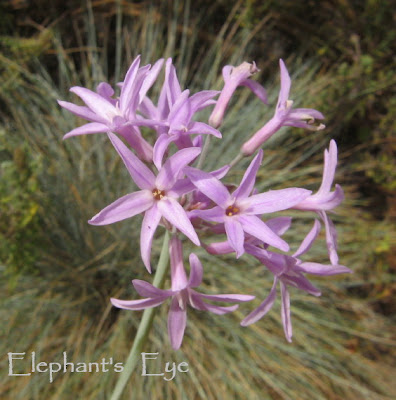Our last garden was on a 45 degree slope, with lots of rocks, in Camps Bay. So the Ungardener found this square, flat, featureless, rockless, ex vegetable garden
– a bit flat,
– and featureless.
We built a pond (see 6th and 7th Oct) with Pani’s Falls to the North East of the house. But on the South side, apart from a row of inherited fruit trees near the wall, the garden railway, and Apple Creek, we still had a large open expanse. We also had a problem. This was a newly built house, why is there so much builder’s rubble? Because first they built it. Wrong. Then they built it right, leaving a mountain of used and broken bricks, and a million bits of concrete. We chipped off the dry mortar and used those bricks to edge the paths.

Clockwise - Cotyledon orbiculata (large green leaves), spekboom Portulacaria afra, lost this name??,
Lampranthus multiradiatus (shrubby vygie), Aloe plicatilis (fan aloe)

























